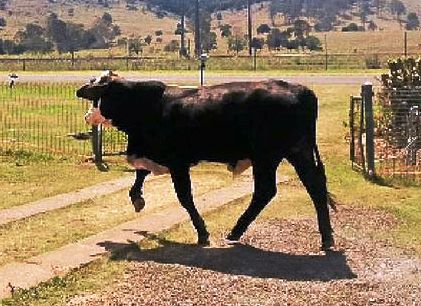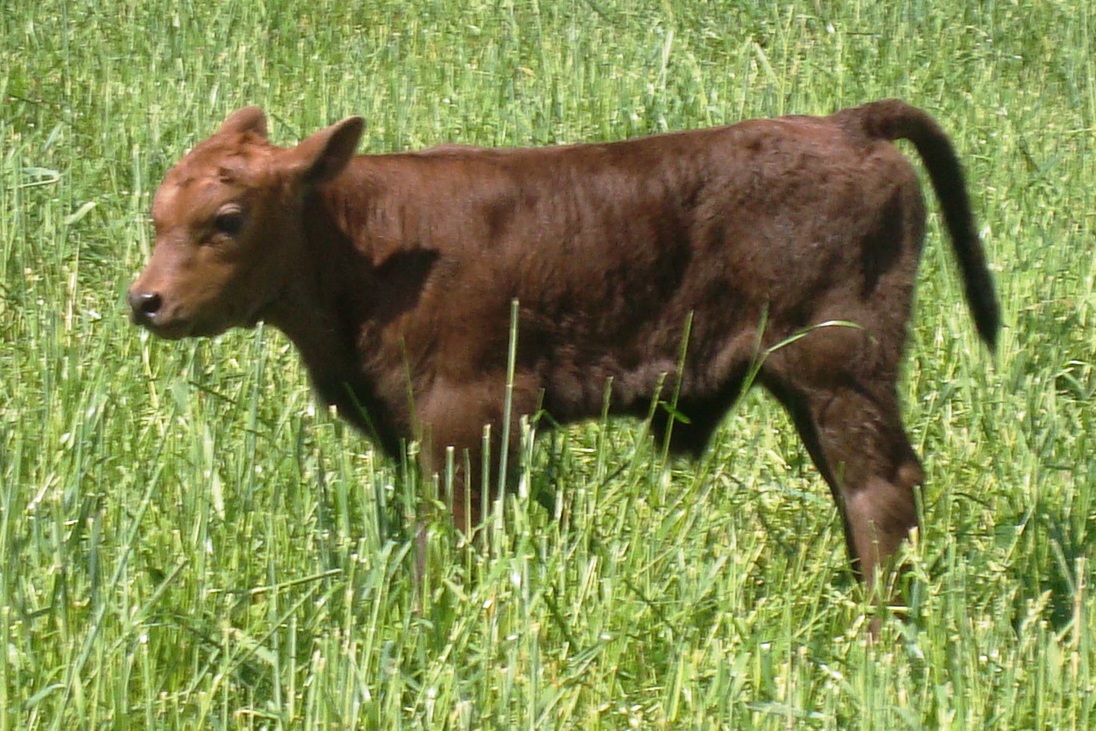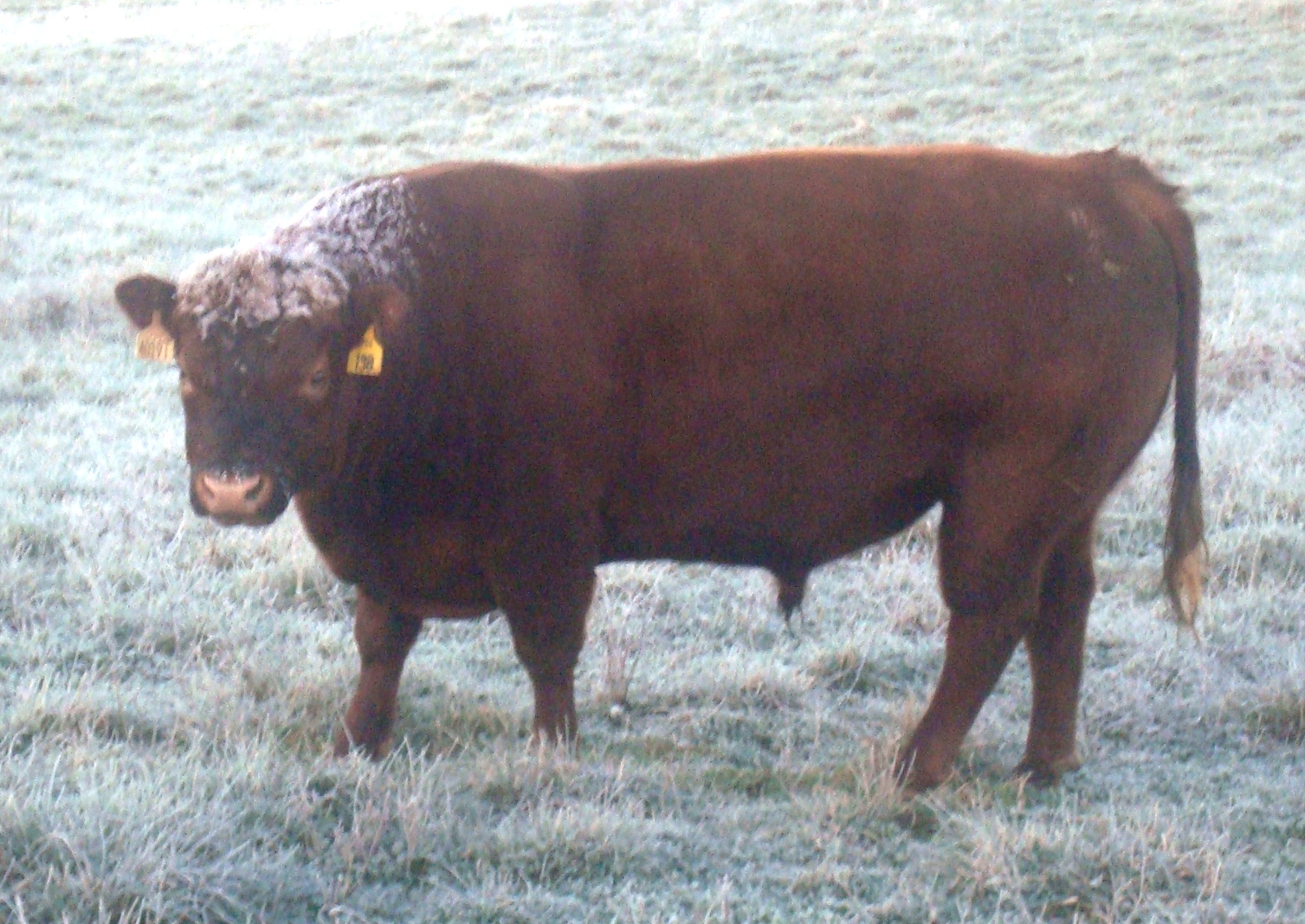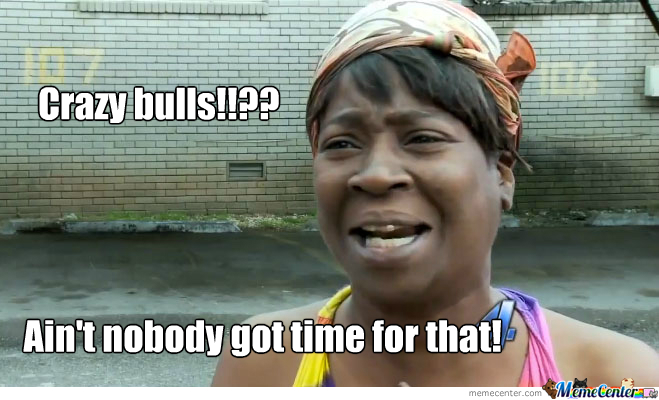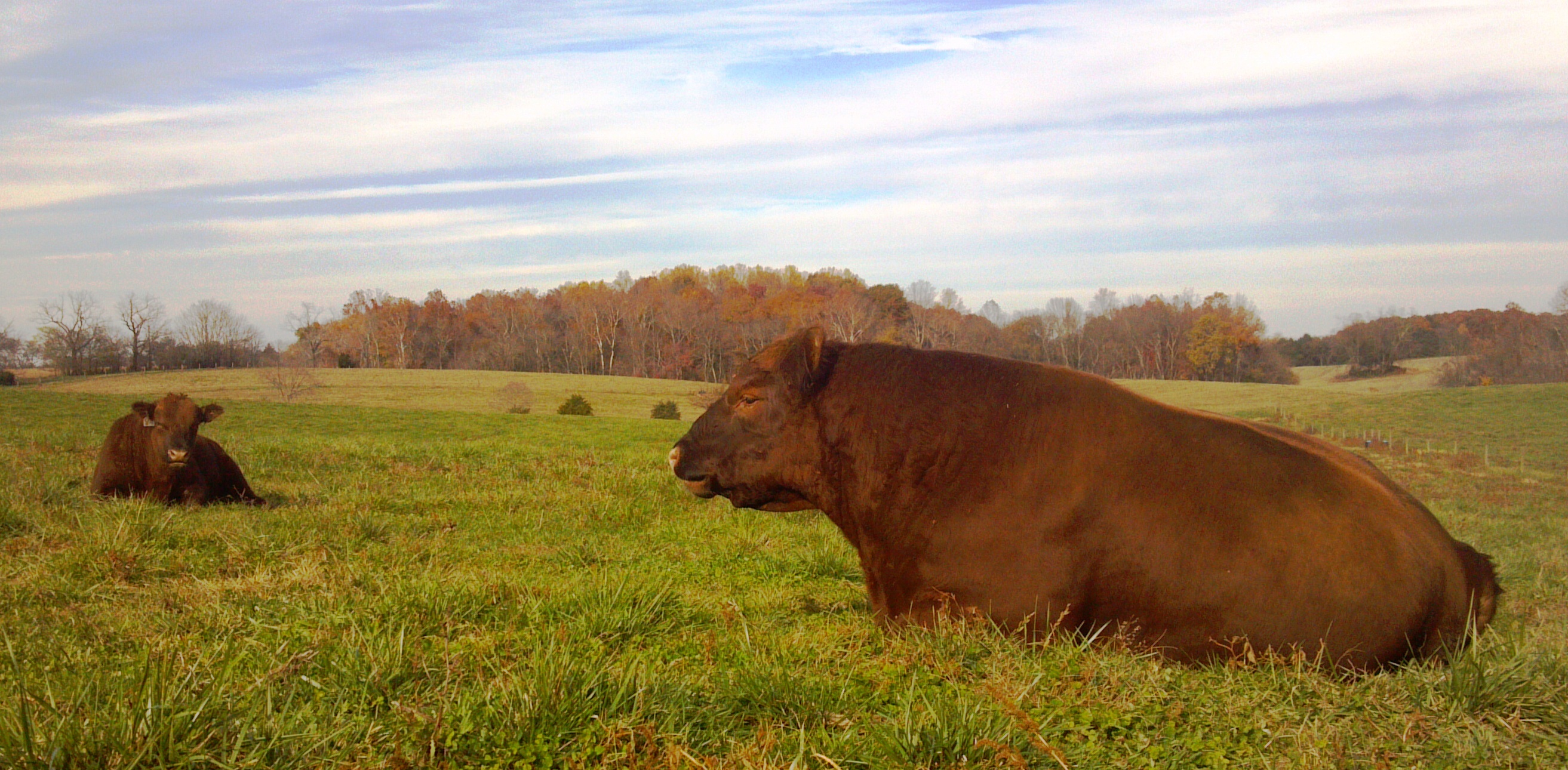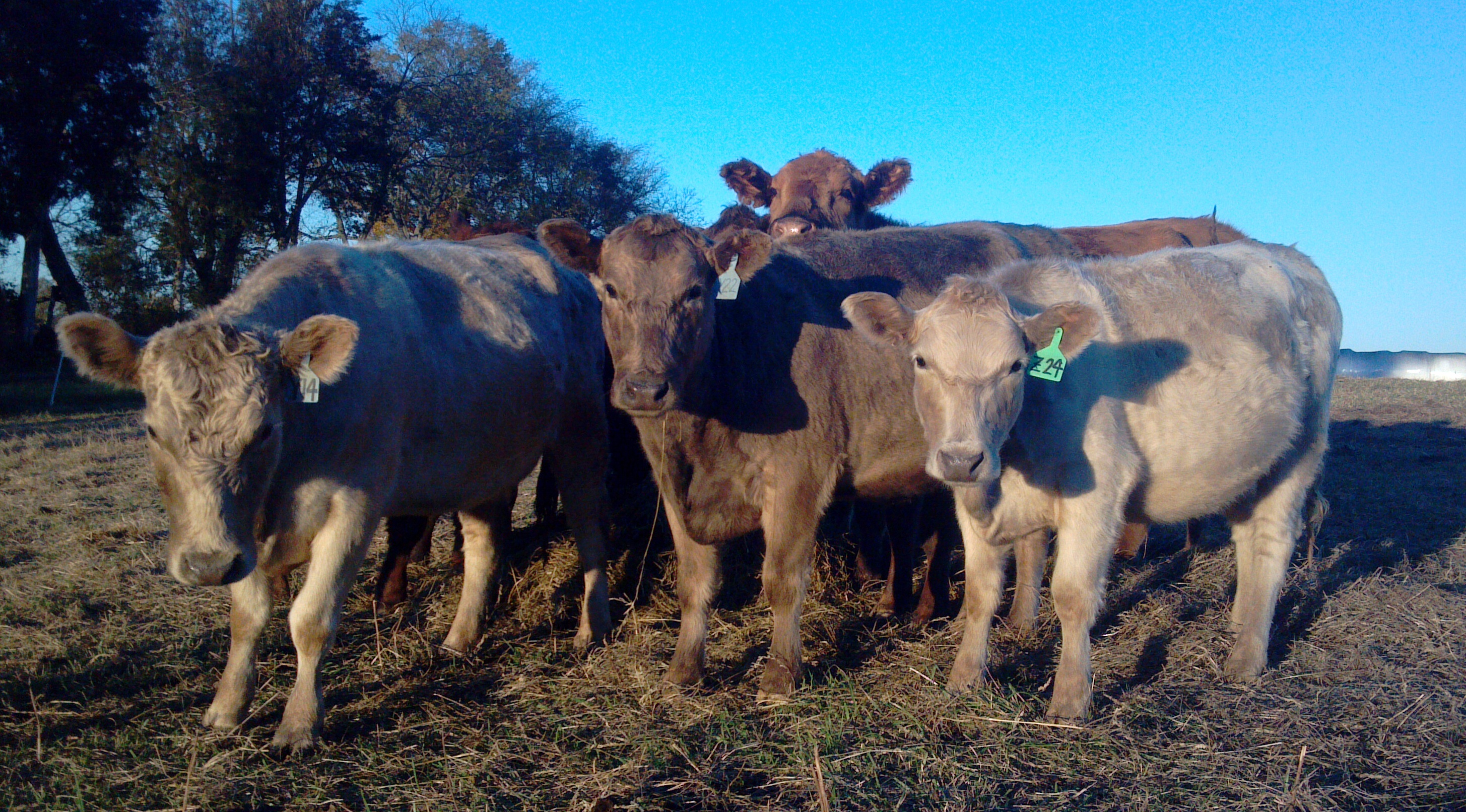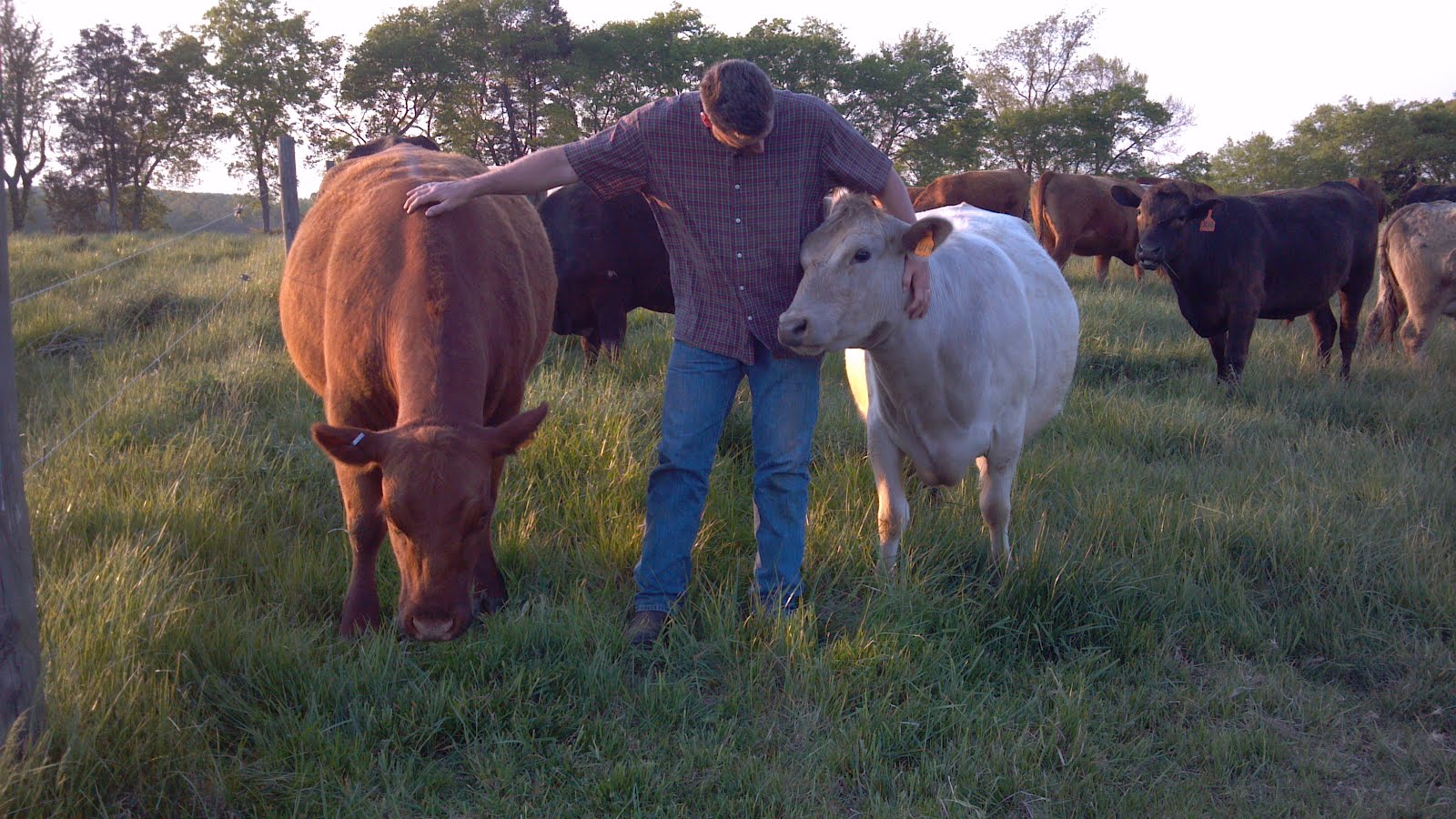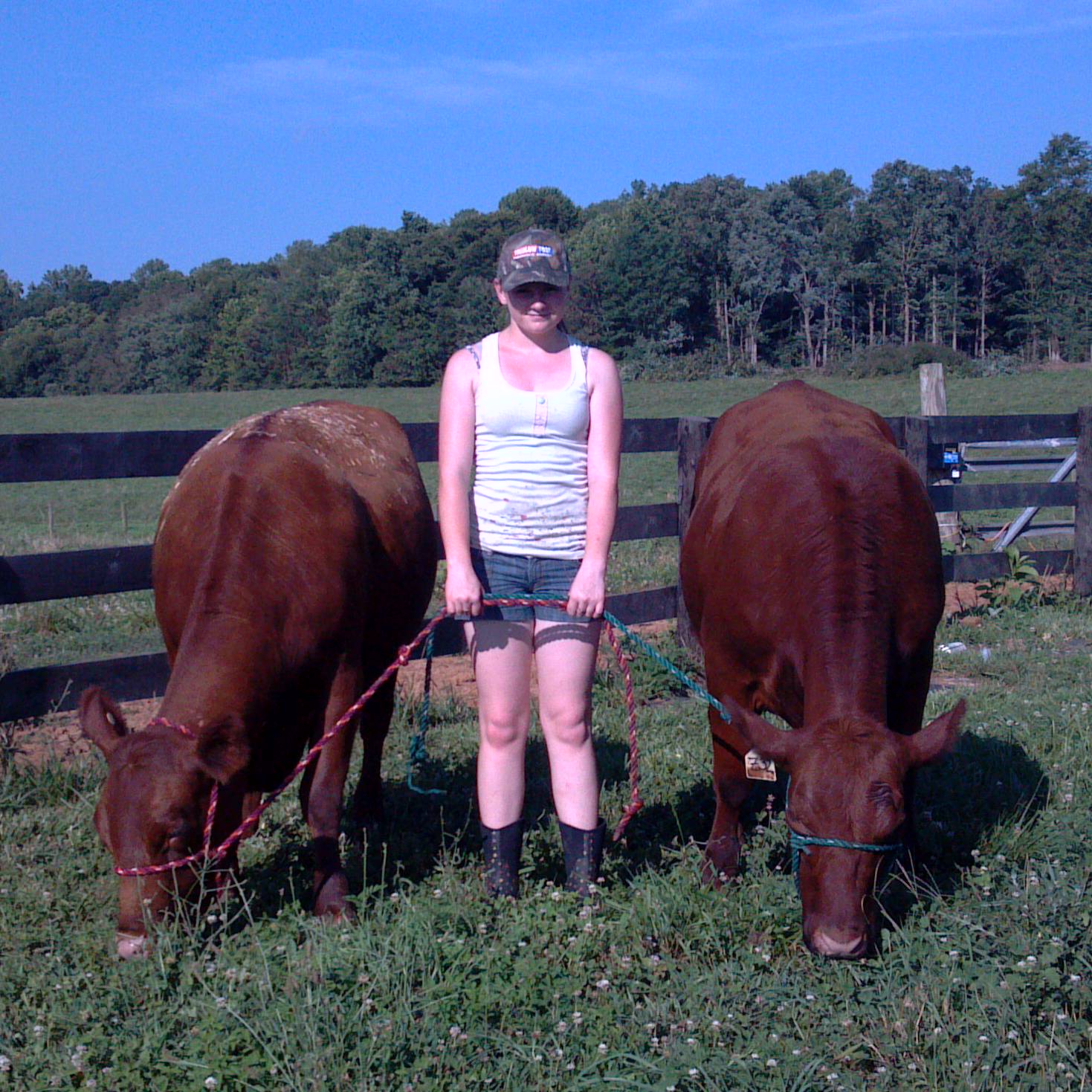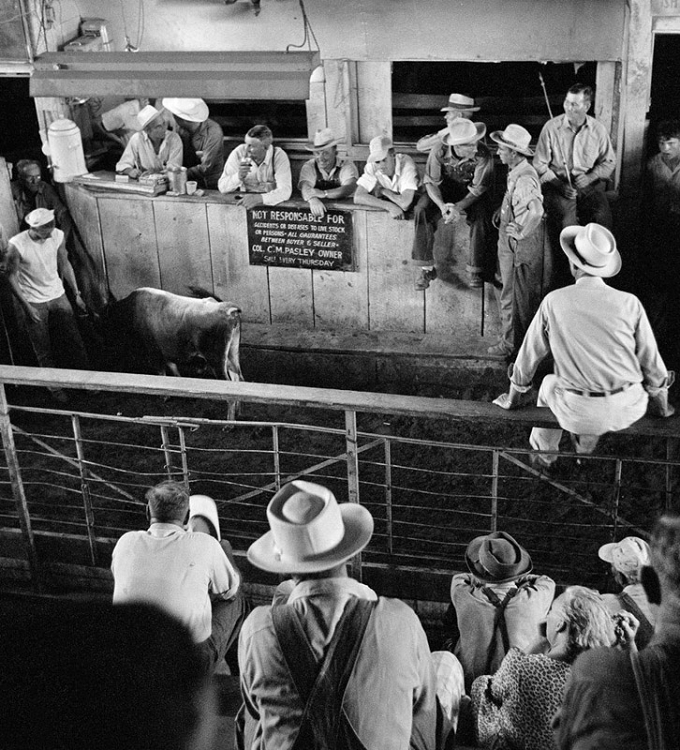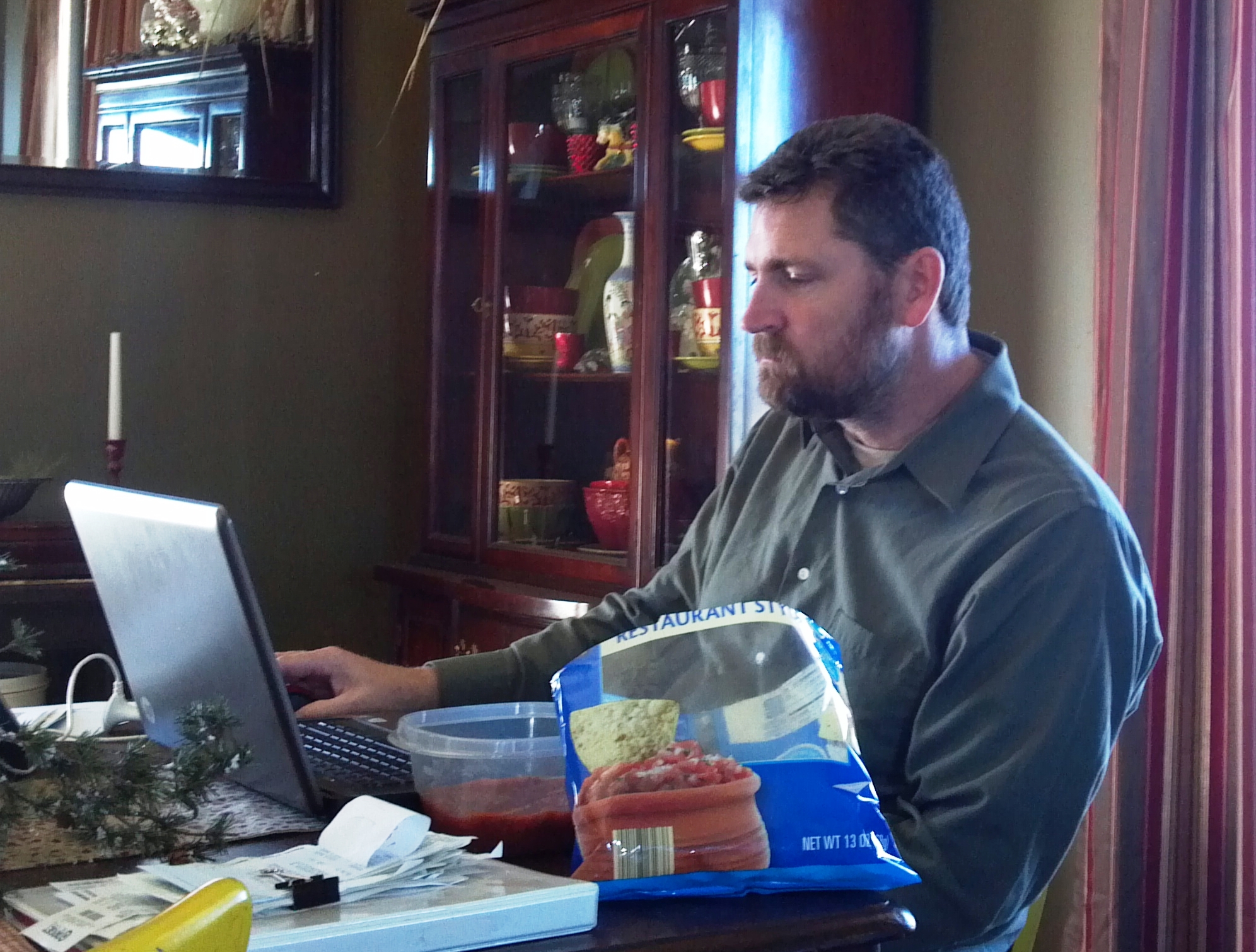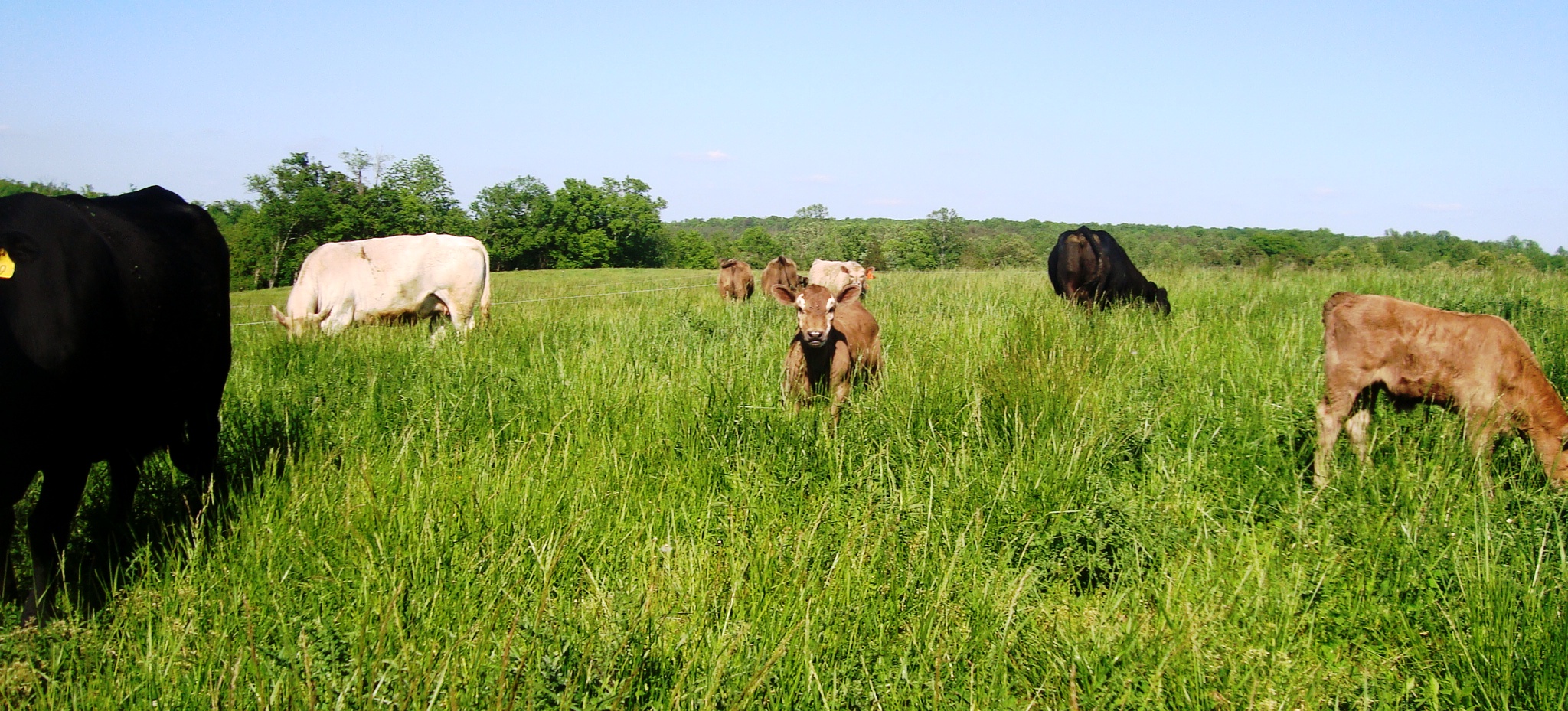 “Stockpiling” and “rotational grazing” are the two main management practices that graziers use. “Stockpiling” is basically letting the grass grow, while “rotational grazing” is how we allow cows access to the grass. By limiting the access to the grass, they eat what’s in front of them without walking all over the farm trying to get the good stuff before their friends get it.
“Stockpiling” and “rotational grazing” are the two main management practices that graziers use. “Stockpiling” is basically letting the grass grow, while “rotational grazing” is how we allow cows access to the grass. By limiting the access to the grass, they eat what’s in front of them without walking all over the farm trying to get the good stuff before their friends get it.
Rotational grazing presents a few problem, though. Getting the cows shade in the summer and shelter from the wind in the winter are important, and it can be tricky making sure all those pieces fit together.
Stop by tomorrow and find out some of the things we did to make sure our cows are well-fed and comfortable.
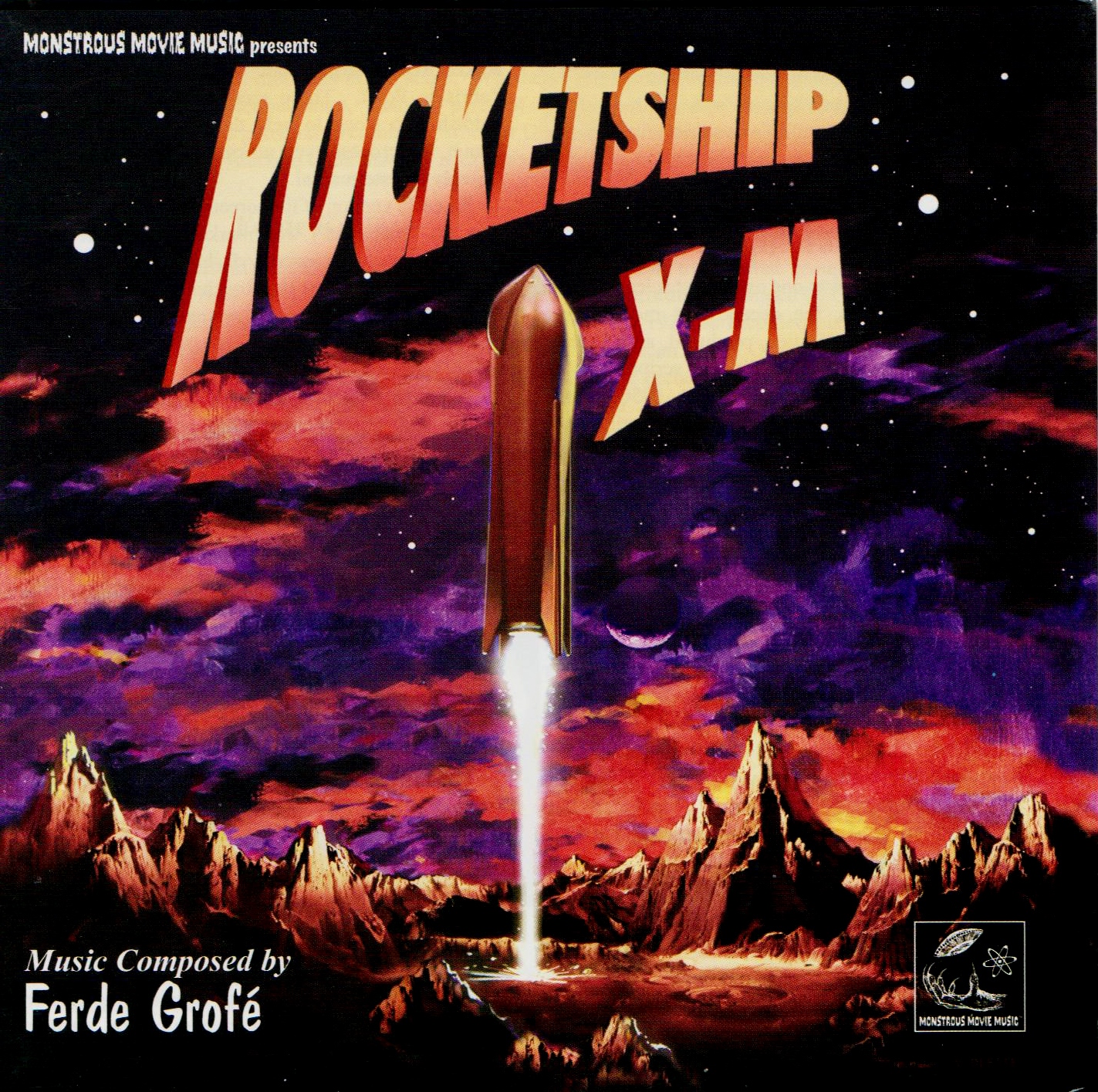 When you’re buying a bull directly off of a farm, you have an opportunity to see not only the bull you are buying, but also his herd-mates, and if it’s an older bull, you may get to see his some of his calves. More importantly, you can see the management system he was raised in. You can see the fences that held him, the feed he was fed and by analyzing the environment in which the bull was raised, assess whether he can thrive in your own, personal management environment. It may seem like you’re making a major genetic investment on looks alone, but you can really learn a lot from a farm visit.
When you’re buying a bull directly off of a farm, you have an opportunity to see not only the bull you are buying, but also his herd-mates, and if it’s an older bull, you may get to see his some of his calves. More importantly, you can see the management system he was raised in. You can see the fences that held him, the feed he was fed and by analyzing the environment in which the bull was raised, assess whether he can thrive in your own, personal management environment. It may seem like you’re making a major genetic investment on looks alone, but you can really learn a lot from a farm visit.
I had to keep telling myself this over and over again when Scott came home one afternoon and told me he had bought a bull. We hadn’t discussed buying a new bull. There really wasn’t anything wrong with the bull we had. He and the neighbor were just going to go ride around. Maybe cruise up to the store and get a corndog or something.
He hadn’t taken the trailer with him, and a friend was hauling the bull home in a couple of days. “Rocks and dirt. I’m telling you this bull looked great, and he was just living on rocks and dirt. It was a disaster. The cows were starving.” Worst of all, the bull was black, and we had already decided that we were getting out of the black cow business. The more he talked about this bull, the more excited he got, and the madder I got.
I stomped, snapped, spit and slammed my way for the next two days. Scott had cereal for dinner – it was easier than rocks and dirt, but believe me, I thought about it.
I’m not sure what word best describes my reaction to Scott’s bull, but smitten comes pretty close. He looked like a cross between a cinder block and a burnt marshmallow. Somebody had obviously put a great deal of thought and effort and money into this bull, and here he was, in our pasture. The kids immediately named him Rocketship. He wasn’t tame by any means, but he went where we asked him, and did what he was supposed to do.
I never got to see any of Rocketship’s calves. We sold every single cow he was bred to. Every last one went to a buyer who bought the whole group. We heard that they were great calves.
I’m not sure what the difference is between an impulse buy and seizing an incredible opportunity, but sometimes, it just doesn’t matter.
The age old way of selecting a bull is to use you neighbor’s bull. This was how it was done for thousands of years, and it still has some merit. In fact, this is how landraces and breeds were developed. Historically, where we lived and who our friends were influenced the bulls we used, and consequently what our cattle looked like.
We’re fortunate enough to have great neighbors who have some pretty decent bulls. That’s how we got our cows bred when we first started out. It makes a lot of sense when you only have a few cows. It also makes sense from the neighbors perspective. The last thing they need is a bull that keeps getting out to go visit some open (unbred) cows.
Make your bull decisions early and definitively. The last thing a cow owner needs is something like this paying the cows a visit.
When you look at the cost (or the value) of individual animals in the herd, the bulls are the high-dollar animals. In a typical herd of 40 cows and one bull, each cow will have one calf, and will influence 1/40 of your calves. Assuming everything goes right, the bull will influence 100% of those calves. If a cow messes up her end of the deal, you’ll end up with 39 calves. If the bull messes up, you may end up with 0 calves. Between the genetic influence on the calves, and the risk involved, producers take bull selection very seriously. And even if we select the right bull, if he hurts his foot and can’t get around well enough to breed cows, we’re out the cost of the bull, and the value of the calves. Bull selection is a REALLY BIG DEAL.
So how do we know that something that looks like this when it’s born will grow up to look like the Chunkster? By combining art and science, beef producers have gotten pretty good at it. We can produce more beef with less feed, and do it reliably. Stop by tomorrow and find out some of the things we consider when selecting the Big Daddy Cheese.
Bulls have a reputation for aggression, that is, at least in beef bulls, mostly undeserved. There are a few beef bulls out there that would just as soon kill you as look at you, but for the most part, beef producers would really rather pick their fights someplace else. (Dairy bulls are another story. They’ll hunt you down like a dog.)
Most beef bulls are interested in exactly two things, food and cows, and even with that, they’re only interested in each cow for a period of about 18 hours every 21 days. It’s not the most demanding job in the world.
There are a few reasons why most beef producers use docile bulls. Most cow/calf operations, the ones that need to have bulls, are like ours – hands-on, family operations. We need to be able to check fences, supply minerals and do our daily herd count without trying to dodge a crazy bull. Docile bulls are more likely to stay where they belong, and they just make life more pleasant. And just as important, docility is highly heritable – a quiet bull is far more likely to sire quiet calves than a crazy bull. And it’s a plus for consumers, too. Docility and meat quality are highly correlated. (Yeah, we really do talk like that, but don’t tell anybody.)
When they do that whole “Running with the Bulls” thing in Pamplona, they do not use the same standards for bull selection that we use here on our farm. I run just about every day, and here are some pictures I took while running with the bulls here at home.
I don’t think we’ll be making the nightly news.
When you grow up with animals, it never occurs to you the huge role that body language plays in inter-species communication. Most people can figure out, for instance, if a dog is going to bite, but there are a surprising number of people who have never had pets, and learn that lesson the hard way.
Cattle and humans have been living in close proximity for a long time – on the order of 10,000 years. Though most people think of “working cattle” as something you do on horseback, maybe with dogs. Here in the east, we mainly do it on foot. Quietly walking through a group of cows give you some insights on individual animals, as well as the group as a whole. Around here the quickest way for a cow to end up on the trailer to someplace else is to raise her head up. That “heads up” is an alarm signal – sort of like the bovine version of shouting “fire” in a theater. Whether she was born with that sensitive nature or she learned it, she can get the whole group into a panic.
A cow that puts her head too far down may be exhibiting signs of aggression. She can mess your day up as much as a crazy cow.
These girls are sort of in the Goldilocks zone – just right. Their attentive, curious expressions tell you a lot about how they are going to behave in the field, and even more, how they’re going to stay fat on grass alone. These girls are neophiles. They welcome novel situations, whether it’s a new handler, a new pasture or a new species of grass.
And they’re not the least bit camera shy.
People always talk about major changes in their lives in terms of either being pushed, or jumping. I didn’t use either method to get here. I fell. After 2 years of standing on the edge, the very dirt beneath my feet eroded, and down I went. You may have heard me scream, but I doubt it. And you certainly didn’t see me. I made sure nobody ever noticed I was even standing there. But there is fresh dirt, and claw marks to show you where I was.
Though I live in the South and consider myself a Southerner, I grew up in the Midwest, and I have this idea that there is a special place in hell for Midwesterners who call too much attention to themselves. So not wanting to potentially subject myself to eternal damnation, I won’t talk about myself. It’ll be better for all of us.
But I’ll go on endlessly about my cows. Holly put out the invitation to participate in this 30 Days of November Challenge at least a month ago, and I know I was personally responsible for a significant increase in her page views as I considered joining in, and then carefully consulted my litany of excuses as to why I shouldn’t. I even waited until after the closing date to contact Holly. I told her that I knew I was too late, but if I had gotten my act together I would have done it. I was going to talk about our Murray Grey cows and call it 30 Shades of Grey, but opted for 30 Days of Vivacious Redheads, so I could talk about our Red Angus.
I’m in the middle of a free-fall. There’s something at the bottom. It might be alligators. It might be rocks. It might be Jello. And I’m not sure how far “down” is. But here in the South, there’s a phrase we use before we do anything really stupid.
“Hey, y’all. Watch this!”
Lots of things go into making a show cow, but one thing’s for certain, they’re easy to find in the herd. No matter how long it’s been since they’ve been in the ring, they always walk around with this certain air of self-importance. Show cows always seem to distort the whole livestock/owner thing. In this picture, Dixie is a bit distressed that Minola is getting all the scratching, and she seems to be trying to remind Scott of his rightful place as her servant. Show cows are like that.
I’m not exactly sure what most men do on the weekends. I guess they golf or watch college sports or go to soccer games.
Here’s what Scott and his buddies do on Saturday mornings. This may just look like some guys hanging out at the sale barn, but this is really market analysis – who’s selling what (and why), who’s buying what, what prices are doing, how everybody’s crops are doing, how their families are doing. They’re finding out about feed supplies, land leases, land sales, and what our lawmakers are doing in Washington, in Richmond, and right here in the county. And it’s all topped off with a slice of homemade pie.
And here’s my true love yesterday afternoon, buying cattle on-line, substituting homemade salsa for homemade pie. I can’t wait to see what he bought me!
